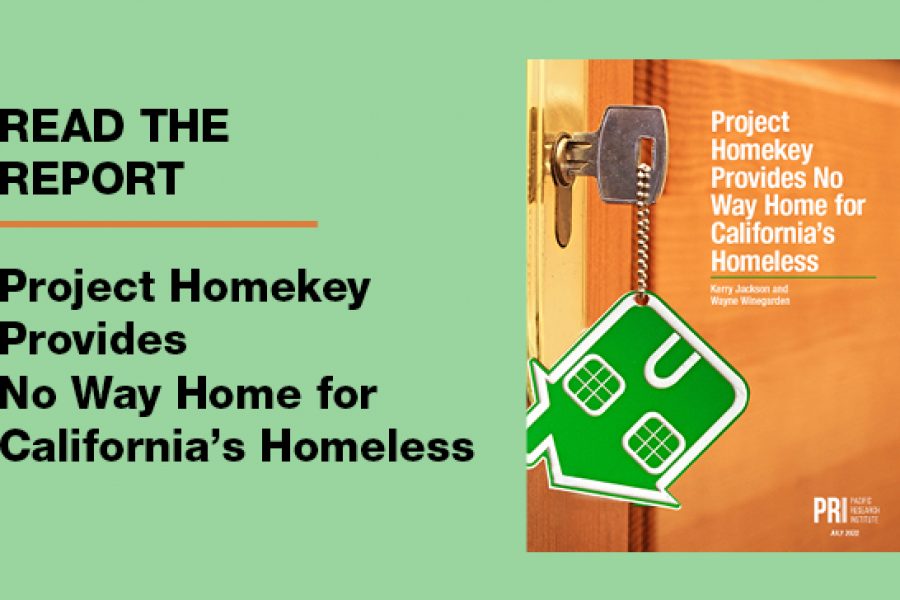The Real Solution to Homelessness is Not Where They Live
Last week, the Los Angeles City Council members passed a controversial resolution that would ban homeless encampments within 500 feet of a school or daycare. But they aren’t the only city looking to implement anti-camping ordinances.
Cities across the state, like Chico and Elk Grove, have responded to the drastic increase in homeless by passing similar ordinances and major cities such as Sacramento are looking to do the same. California’s homelessness problem is the worst in the nation by a large margin and despite billions of dollars being spent on “Housing First” programs, emergency shelters and resources, the number of individuals experiencing homelessness continues to rise at a concerning rate.
In April 2020, California attempted to temporarily solve the amount of unsheltered homeless amidst the COVID-19 pandemic through Project Roomkey, a program that would utilize the hotels and motels not being used during the shutdowns to house tens of thousands of homeless.
California had 113,660 unsheltered homeless in 2020, making up more than half of the entire nation’s unsheltered homeless. With the creation of Project Roomkey, Governor Newsom set a goal of securing 15,000 rooms. Even if California placed two people in each room, the project would have only temporarily brought 25% of the state’s unsheltered homeless off the streets. And at the exponential cost of the project, it was questionable whether or not Project Roomkey was just another publicity stunt or an actual solution to reducing the number of individuals experiencing homelessness.
The Alameda County Office of Homeless Care and Coordination said, “Project Roomkey is estimated to have cost about $260 per participant per night.”
That is almost triple the cost of a Motel 6 in the same city.
According to a recent study from Pacific Research Institute’s Wayne Winegarden and Kerry Jackson, the cost of providing rooms to about 1,800 homeless persons in Sacramento was almost $4,000 per room. And despite the project, Sacramento’s homeless population increased by two-thirds from 2019 to 2022, from 5,570 to almost 9,300.
As seen in Sacramento, what is most frustrating is that Project Roomkey did not really address the overarching crisis of homelessness. In fact, the number of homeless across the state has actually increased after the implementation of the project and hotels are beginning to end their contracts, adding to the number of individuals living on the streets.
In Los Angeles alone, hotels such as the Mayfair Hotel, the L.A. Grand Hotel downtown, the Highlands Gardens Hotel in Hollywood and the Airtel Plaza Hotel will all be ending their contracts by the end of September. These hotels combined provided 1,042 rooms for unsheltered homeless the past two years, adding over a thousand more unsheltered homeless into the streets of L.A.
With a failed and expensive attempt of helping people off the streets ending, cities and counties are now left to solve the thousands of individuals returning to the streets. Crime involving homeless people, particularly violent crime, has increased since 2019. 15% of violent crime in the city of L.A. involved a homeless person in 2021, up from 11% in 2019. When comparing the homeless population to L.A.’s homeless crime data, the Los Angeles Police Department Homeless coordinator, Commander Donald Graham, found that the crime numbers in recent years are “disproportionality high.”
Cities and counties are responding with anti-camping ordinances, attempting to remove large populations of homeless individuals away from vulnerable locations and communities such as schools and daycares. However, they are receiving much push-back.
Homelessness is not a housing issue; it is a mental health and financial stability issue. The number of unsheltered homeless has been increasing since 2014, revealing that California’s “Housing First” and the billions of dollars allocated toward emergency shelters and housing programs are not eliminating the problem. With safety becoming a larger concern, anti-camping ordinances are understandable but still not the solution. If we are to eliminate homelessness in this state, the focus must shift from where these individuals are living to resolving the mental health issues and addiction they struggle with.
Emily Humpal is the Pacific Research Institute’s deputy communications director.


